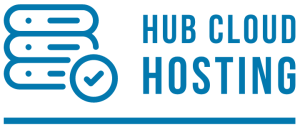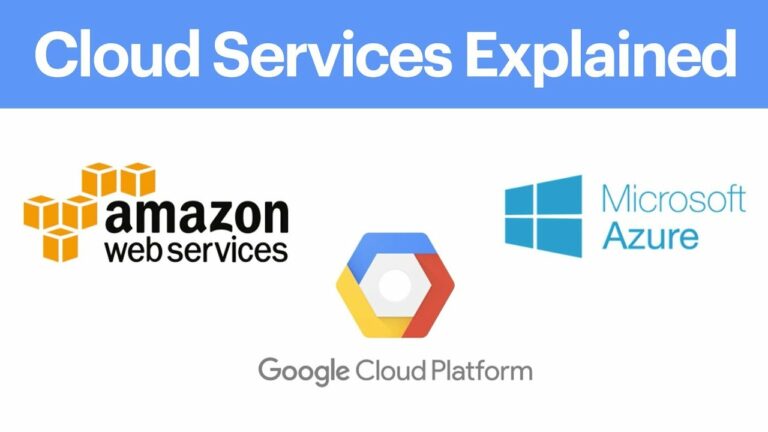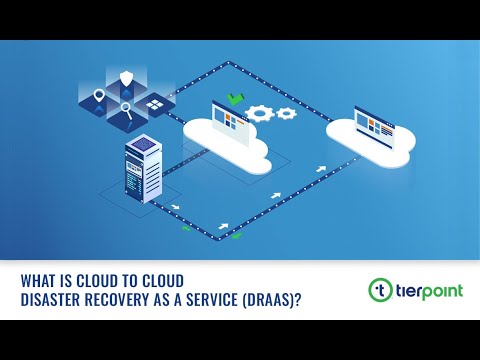Cloud hosting has become a prevalent choice for businesses seeking efficient and scalable hosting solutions. However, comprehending the intricacies of the cost analysis behind basic cloud hosting is essential for making informed decisions. Understanding the expenses involved in this technology enables organizations to optimize their resources effectively and maximize their return on investment. This article provides a comprehensive overview of the cost analysis of basic cloud hosting, highlighting the key factors that influence pricing and offering insights into cost optimization strategies. From infrastructure costs to data transfer fees, readers will gain valuable knowledge to navigate the financial aspects of cloud hosting.
What is Basic Cloud Hosting?
Definition of Basic Cloud Hosting
Basic cloud hosting refers to the practice of hosting websites, applications, and databases on virtual servers that are provisioned and managed by a third-party cloud service provider. Unlike traditional hosting methods that rely on physical servers, basic cloud hosting harnesses the power of a network of virtual servers located in data centers around the world. This allows businesses and individuals to benefit from flexible and scalable computing resources without the need to invest in expensive hardware or infrastructure.
Key Features of Basic Cloud Hosting
The key features of basic cloud hosting include:
- Scalability: Basic cloud hosting providers offer the ability to easily scale up or down resources as per the needs of the business. This ensures that the infrastructure can adapt to changes in traffic, user demand, and application requirements.
- Reliability: Cloud hosting providers typically have redundant infrastructure in place, ensuring high availability and minimizing downtime. The use of load balancers and automatic resource allocation helps distribute traffic across multiple servers, reducing the impact of hardware failures.
- Security: Basic cloud hosting providers employ a range of security measures, such as firewalls, encryption, and regular backups, to protect data and applications hosted on their platforms. This helps businesses maintain the confidentiality, integrity, and availability of their critical information.
- Cost Efficiency: By leveraging the cloud, businesses can avoid upfront capital expenses for hardware and ongoing maintenance costs. Basic cloud hosting often operates on a pay-per-use model, allowing organizations to only pay for the resources they consume, making it a cost-effective option for businesses of all sizes.
Advantages of Basic Cloud Hosting
There are several advantages to opting for basic cloud hosting:
- Flexibility: Basic cloud hosting provides the flexibility to quickly scale resources up or down as required. This is essential for businesses that experience fluctuating demand or anticipate future growth.
- Global Reach: With basic cloud hosting, businesses can easily deploy their applications and services across multiple data centers around the world. This enables them to reach a global audience, ensuring faster response times and improved user experience.
- Ease of Management: Cloud service providers take care of the underlying infrastructure, including hardware setup, maintenance, and security updates. This allows businesses to focus on their core competencies and reduces the burden of managing complex IT systems.
- Improved Performance: Basic cloud hosting providers often have a vast network of servers and advanced technologies in place, ensuring superior performance and faster loading times for websites and applications.
- Business Continuity: Cloud hosting platforms offer automatic backups and disaster recovery options, minimizing the risk of data loss and ensuring business continuity in the event of a natural disaster or system failure.
Factors Affecting the Cost of Basic Cloud Hosting
Resource Allocation
One of the primary factors that affect the cost of basic cloud hosting is the allocation of computing resources. The more resources allocated to a project, whether it be CPU, memory, or storage, the higher the cost will be. It is crucial for businesses to carefully analyze their resource requirements and seek to optimize their usage to avoid unnecessary expenses.
Data Storage
The amount of data stored on the cloud hosting platform directly impacts the cost. As businesses accumulate more data, the cost of storing and managing it increases. Choosing the right storage solution and periodically reviewing data retention policies can help minimize storage costs while ensuring data accessibility and compliance.
Bandwidth Usage
Bandwidth usage refers to the amount of data transferred between the cloud hosting platform and its users. Excessive data transfer can result in additional charges, particularly if the hosting provider has pricing tiers based on bandwidth consumption. Understanding data transfer patterns and optimizing content delivery can help mitigate these costs.
Scalability
While scalability is a key advantage of cloud hosting, it can also impact costs. Scaling resources to meet demand can lead to increased expenses, especially during periods of high traffic or resource-intensive workloads. It is important to carefully plan and leverage automated scaling features to ensure resources are provisioned efficiently and cost-effectively.
Support and Maintenance
The level of support and maintenance required from the cloud hosting provider can affect the overall cost. Some providers offer comprehensive support options, including 24/7 technical assistance and proactive monitoring, at an additional cost. Assessing the specific support needs of the business and aligning them with the available service levels can help optimize costs while ensuring adequate support.
Server Location
The physical location of the cloud hosting servers can impact costs due to factors such as electricity, cooling, and infrastructure costs specific to that region. Choosing a server location that aligns with the target audience or taking advantage of regions with lower costs can result in significant savings over time.
Different Pricing Models for Basic Cloud Hosting
Pay-as-you-go
Pay-as-you-go pricing, also known as on-demand pricing, allows businesses to pay for the resources they consume on an hourly or per-minute basis. This model offers flexibility and cost-effectiveness, as users are only charged for the exact amount of resources used. It is ideal for businesses with unpredictable workloads or those looking to test new applications without committing to long-term contracts.
Reserved Instances
Reserved Instances offer a discounted pricing model for businesses that require a more stable and predictable workload. By reserving instances for a specified period, typically one to three years, users can benefit from substantial cost savings compared to the pay-as-you-go pricing. This model is suitable for businesses with steady usage patterns or long-term projects.
Spot Instances
Spot Instances allow businesses to bid on unused cloud computing capacity, enabling them to access resources at significantly reduced prices. However, since spot instances can be terminated at any time if the spot price exceeds the bid, they are generally recommended for non-critical workloads or tasks that can withstand intermittent interruptions.
Dedicated Servers
For businesses with specific performance or regulatory requirements, dedicated servers offer a dedicated infrastructure and resources. Although dedicated servers tend to be more expensive, they provide enhanced security, performance, and customization options. This pricing model is suitable for businesses that require a high degree of control over their infrastructure or demand rigorous security measures.
Calculating the Total Cost of Basic Cloud Hosting
Anticipated Resource Usage
To calculate the total cost of basic cloud hosting, businesses need to accurately estimate their anticipated resource usage. This includes determining the required number of instances, CPU and memory allocation, storage capacity, and expected data transfer. By analyzing historical data, load testing, and considering future growth projections, businesses can optimize their resource allocation and avoid overprovisioning, thereby reducing costs.
Pricing Structure
Understanding the pricing structure of the chosen cloud hosting provider is essential for accurate cost calculation. Different providers offer varying pricing tiers, such as on-demand pricing, reserved instances, or spot instances. Analyzing the pricing details, including hourly rates, storage costs, data transfer fees, and support options, allows businesses to evaluate the most cost-effective configuration.
Additional Costs
Apart from the core pricing components, businesses should also consider additional costs that may impact the total cost of basic cloud hosting. These can include costs associated with additional services, such as backups, data replication, content delivery networks, and load balancers. It is crucial to factor in these costs to get a comprehensive understanding of the total expenditure associated with cloud hosting.
Optimizing Costs for Basic Cloud Hosting
Right-sizing Resources
To optimize costs, businesses should regularly assess their resource usage and right-size their infrastructure accordingly. This involves reviewing instance sizes, CPU and memory allocations, and storage requirements to ensure they align with the actual needs of the applications and workloads. Efficiencies gained through right-sizing can result in significant cost savings over time.
Implementing Automation
Leveraging automation tools and scripts can help optimize costs by ensuring resources are provisioned, scaled, and de-provisioned automatically based on predefined rules and policies. Automated processes can help address workload fluctuations, manage unused resources, and improve overall efficiency, reducing the risk of overspending.
Using Reserved Instances
For predictable workloads or long-term projects, utilizing reserved instances can offer substantial cost savings. By committing to a specific instance type and term, businesses can secure discounted rates compared to on-demand pricing. Reserved instances are particularly effective when there is consistency in resource requirements and little variation in the workload.
Monitoring and Managing Usage
Developing a robust monitoring and management strategy is essential for optimizing costs. Monitoring tools can help track resource utilization, identify underutilized instances, and detect anomalies that may indicate potential cost inefficiencies. Regular analysis of usage patterns allows businesses to take corrective actions and ensure resources are allocated optimally, minimizing waste.
Incorporating Serverless Technologies
Serverless technologies, such as serverless computing and managed services, offer a cost-effective alternative by abstracting away the underlying infrastructure. These technologies enable businesses to pay only for the actual computing time and resources consumed, eliminating the need for traditional infrastructure management. By leveraging serverless technologies, businesses can achieve greater efficiency and cost savings.
Comparing Basic Cloud Hosting Providers
Pricing Plans and Models
When comparing basic cloud hosting providers, it is important to analyze their pricing plans and models. Although many providers offer similar features, the specific pricing structure can vary significantly. Evaluating whether the provider offers competitive pricing tiers, discounts for long-term commitments, and flexible billing options is crucial for making an informed decision.
Performance and Reliability
Performance and reliability are critical factors to consider when comparing cloud hosting providers. Assessing factors such as uptime guarantees, network connectivity, load balancing capabilities, and the availability of data centers in strategic locations helps determine the provider’s ability to deliver consistent and reliable performance.
Security Features
The security measures implemented by cloud hosting providers play a vital role in safeguarding data and applications. Evaluating security features, such as encryption, access controls, regular backups, and compliance certifications, ensures that the chosen provider meets the necessary security standards and can provide adequate protection for sensitive information.
Customer Support
Effective customer support is essential for resolving issues and ensuring smooth operations. Assessing the quality and availability of customer support options, such as live chat, email, or phone support, as well as the provider’s response times and expertise in handling technical queries, helps gauge the level of support businesses can expect.
Integrations and Add-ons
Different cloud hosting providers offer varying levels of integration with third-party services and applications. Evaluating the availability of integrations, add-ons, and APIs is important for businesses that rely on specific tools or require seamless integration with existing systems. Compatibility with popular frameworks and technologies can greatly enhance productivity and efficiency.
Explaining Amazon AWS, Google GCP, and Microsoft Azure Cloud Pricing & Costs
Amazon AWS Cloud Pricing & Costs Breakdown
Amazon Web Services (AWS) structures its cloud pricing advantages into three key categories. The first is the “Pay as you Go” model, likened to paying for utilities. Users pay only for the services utilized and the duration of use. A visual representation illustrates a cost comparison between on-premises solutions and AWS, including additional costs related to underutilization.
AWS’s second pricing tool is “Reserved Capacity,” a prevalent cloud concept. This allows users to reserve a predetermined amount of computing or storage in advance, leading to significant cost reductions—potentially up to 75% compared to on-demand pricing. This is a strategic approach for cost savings on AWS.
Lastly, AWS provides “Volume-based Discounts” based on economies of scale. For instance, in Amazon S3 pricing, the more storage is used, the lower the cost per gigabyte. These discounts escalate, with up to 50TB priced at 0.023 GB/month and 500TB+ at 0.021 GB/month. These cumulative savings underscore the importance of AWS cost optimization.
Further insights into AWS data transfer costs and AWS EC2 pricing can be explored.
Google GCP Cloud Pricing & Costs Explanation
Google Cloud pricing adopts a pay-as-you-go model, with no activation or termination fees. Key additional cost benefits include:
Preemptible VM Instances: If steady availability isn’t crucial for certain workloads, such as background data management processes, users can configure interruptions, saving up to 79%.
Per-second Billing: Google Cloud VM pricing is precise, billed by the second, ensuring users pay only for actual usage.
Sustained-use Discounts: Significant workloads on Compute Engine and Cloud SQL each month automatically qualify for up to a 30% discount.
Committed-use Discounts: Ideal for users with a limited number of projects, these discounts, agreed upon in advance, can reach up to 57% without long-term commitments.
The GCP cloud cost calculator is available here, and more details about Azure VM pricing can be found.
Microsoft’s Azure Cloud Pricing & Costs Overview
Microsoft Azure’s cloud pricing incorporates the option to reserve instances with a one or three-year commitment to secure price savings. Instances can be exchanged or canceled at any time to accommodate evolving business models.
Additional advantages in Azure cloud cost control include:
Reduced Development and Testing Costs: Lower charges for development and testing resources, including zero software fees for Azure VMs and reduced dev-test pricing for other Azure cloud services.
Spot VMs: Similar to preemptible VM instances on GCP, these offer a 90% cost advantage for interruptible workloads compared to traditional Pay-as-you-Go VMs.
Reserved Instances: Similar to Reserved Capacity or Committed Use Discounts, users can agree in advance, resulting in potential savings exceeding 70% compared to Pay-as-you-Go.
Hybrid Benefit Offering: Enables the use of existing licenses from Windows Server or SQL Server with software assurance, resulting in additional savings.
The Azure pricing calculator is available to assist in understanding these intricacies. These insights into the major cloud providers aim to provide valuable considerations for users navigating their respective pricing structures.
Understanding the Hidden Costs of Basic Cloud Hosting
Data Transfer Costs
While cloud hosting providers often offer a certain amount of data transfer for free, excessive data transfer can incur additional costs. It is important for businesses to understand the included data transfer limits and accurately estimate their data transfer requirements to avoid unexpected charges.
Backup and Recovery Fees
Cloud hosting providers typically offer backup and recovery services at an additional cost. Businesses should carefully evaluate their backup requirements, including frequency and retention policies, to ensure they align with the provider’s offerings and pricing. Backup and recovery fees can add to the overall cost of cloud hosting if not considered in advance.
Extra Storage Fees
When businesses exceed the allocated storage limits, additional storage fees may apply. It is important to monitor storage usage and plan for future growth to avoid unexpected costs. Implementing strategies such as data archiving and compression can help optimize storage usage and control expenses.
Network Load Balancer Costs
For businesses that require high availability and load balancing across multiple instances, additional costs may be incurred for network load balancer services. These costs can vary based on the provider and the level of traffic and utilization. Understanding the pricing structure and alternatives for load balancing can help manage these costs effectively.
Professional Services Expenses
In some cases, businesses may require professional services from the cloud hosting provider, such as migration assistance, architecture design, or troubleshooting. These professional services often come at an additional cost. To avoid potential surprises, businesses should clearly define their requirements and evaluate the associated costs before engaging with professional services.
Best Practices for Cost-effective Basic Cloud Hosting
Regularly Reevaluate Resource Usage
To ensure cost-effective cloud hosting, businesses should regularly assess their resource usage, analyze performance patterns, and identify areas of optimization. By regularly reviewing and right-sizing resources, businesses can align their infrastructure with actual needs, minimizing wastage and optimizing costs.
Optimize Performance and Efficiency
Improving performance and efficiency can contribute to cost reductions in cloud hosting. Measures such as application optimization, database tuning, content delivery network (CDN) implementation, and caching techniques can help reduce resource requirements and improve response times, resulting in cost savings.
Implement Cost Control Measures
To control costs effectively, businesses should implement cost control measures, such as setting spending limits, incorporating usage alerts, and implementing budgeting tools. These measures help identify potential cost overages and allow businesses to take corrective action before expenses escalate.
Negotiate Pricing with Providers
Negotiating pricing with cloud hosting providers can yield significant cost savings, especially for long-term commitments or high-volume usage. Businesses should leverage their usage patterns, long-term projections, and competitive offerings to negotiate favorable pricing agreements that meet their requirements.
Leverage Reserved Instances
Reserved instances offer substantial savings for businesses with predictable workloads or long-term projects. By committing to reserved instances, businesses can benefit from lower hourly rates compared to on-demand pricing. Analyzing workload patterns and cost-performance trade-offs can help identify opportunities for leveraging reserved instances effectively.
Basic cloud hosting offers businesses a cost-effective and flexible solution for hosting their websites, applications, and databases. By understanding the key features, advantages, and factors affecting the cost of basic cloud hosting, businesses can make informed decisions that optimize their hosting expenses. Analyzing different pricing models, calculating the total cost, and implementing cost optimization strategies can result in substantial savings. Finally, considering hidden costs, comparing providers, studying case studies, and following best practices contribute to maximizing cost-effectiveness while harnessing the benefits of basic cloud hosting.








